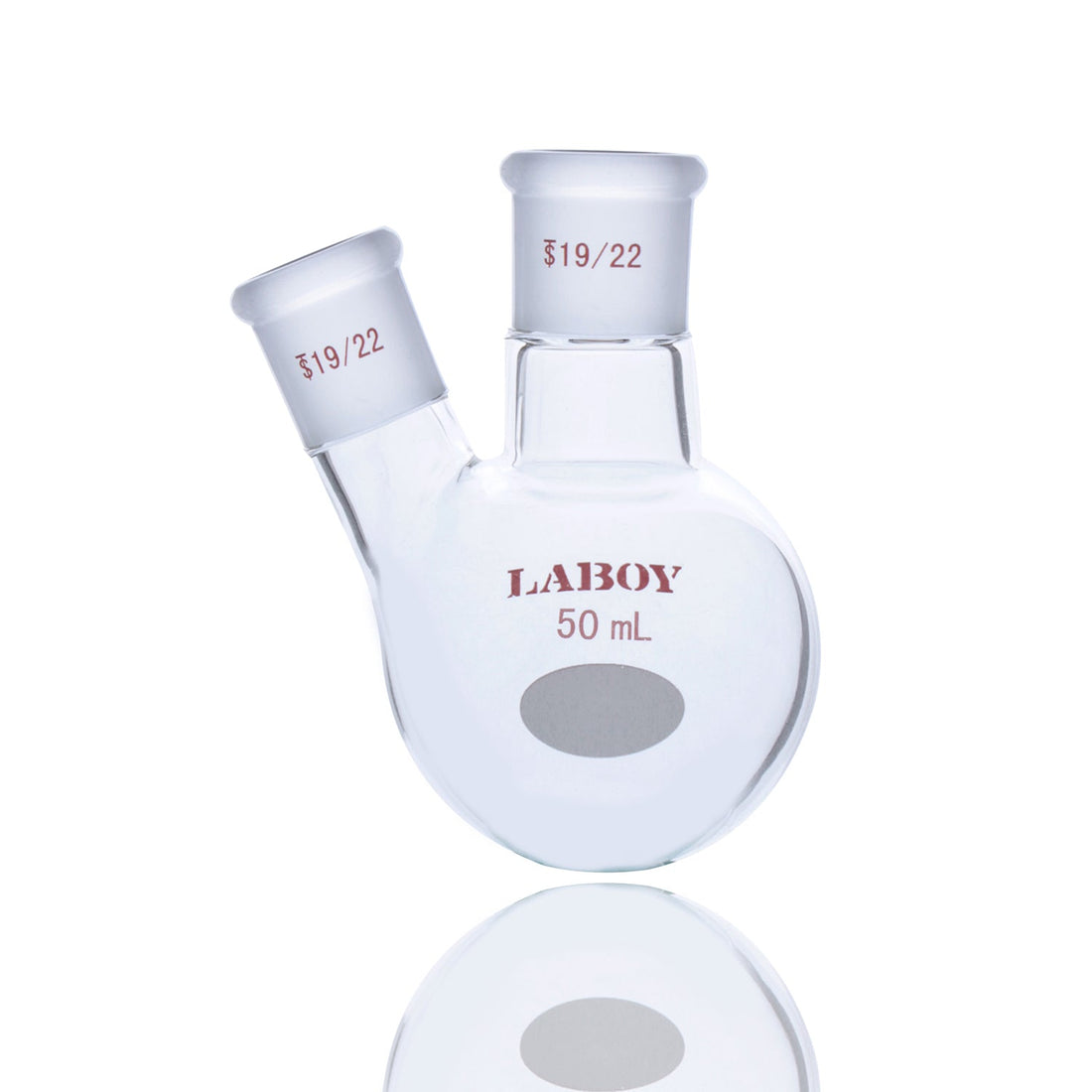Two-neck flasks are a staple of organic chemistry labs, featuring two openings that allow multiple pieces of apparatus to connect at once. A typical two-neck round bottom flask enables a chemist to, for example, attach a condenser to one neck while a thermometer or addition funnel fits in the other. This design enables simultaneous heating, reflux, and controlled reagent addition without interrupting the reaction. Chemists can add reagents gradually to a hot reaction mixture or monitor the temperature continuously, all while maintaining a closed system. This improves efficiency (no need to disassemble setups mid-process) and increases safety and control, making two-neck flasks indispensable for complex organic syntheses and distillation procedures.
Importance of Two-Neck Flasks in Organic Synthesis
In a typical one-neck flask, only a single connection (like a condenser or a stopper) can be made at a time. A two-neck flask accommodates a condenser in one neck (for reflux or distillation) and an addition funnel or thermometer in the other neck. This configuration is crucial for performing many advanced experimental setups in organic synthesis:
-
Simultaneous Reactions and Monitoring: Two-neck flasks enable simultaneous processes – for example, you can continuously reflux a reaction mixture through a condenser attached to one neck while adding reactants gradually through a funnel or syringe in the second neck. This is essential for controlled additions (like dropwise addition to manage an exothermic reaction) without interrupting the reaction or exposing it to air.
-
Improved Safety and Control: By allowing a thermometer to be inserted directly into the reaction via the second neck, you can monitor the internal temperature in real time, ensuring it stays within safe limits. Similarly, if a reaction needs to be run under an inert atmosphere, one neck can hold a reflux condenser and the other can serve as a gas inlet or for a stopper, maintaining a closed inert environment.
-
Efficiency in Multi-Step Procedures: Many syntheses require steps like heating, stirring, adding reagents, and distilling off solvents. A dual-neck round bottom flask reduces the need to constantly swap adapters or glassware between steps – everything can be set up at once. This saves time and keeps the reaction under consistent conditions.
Overall, the two-neck flask is prized for its versatility. It’s like having an extra “hand” on your reaction vessel, making complex procedures more feasible and reliable. Whether in academic research or industrial labs, chemists rely on two-neck round bottom flasks for tasks ranging from routine reflux reactions to more specialized operations like vacuum distillations or air-sensitive syntheses.
Using a Two-Neck Flask: Key Steps and Tips
1. Setup and Assembly
Secure the round-bottom flask using an appropriate support. Since it cannot stand by itself, place it in a cork ring or clamp it to a stand by one of the necks. Next, attach the required equipment to each neck. For example, you might fix a reflux condenser to the center neck and insert an addition funnel or thermometer into the angled side neck. Make sure the ground glass joints match (e.g., 14/20 joint condenser into a 14/20 neck) and are well-seated. If needed, apply a thin layer of grease on the joints for an airtight seal.
2. Running the Reaction
Add your reactants to the flask. If heating is required, use a heating mantle or oil bath. If you’re refluxing, start the flow of cooling water in the condenser. The second neck allows you to add reagents gradually while the mixture is hot and stirring. Always keep an eye on the reaction’s progress; the dual-neck setup is especially useful for controlling exothermic reactions.
3. Completion and Safety
Once the reaction is complete, turn off the heat and allow the flask to cool naturally. Do not place a hot flask on a cold surface. After cooling, remove attached apparatus one at a time. Handle the flask carefully, especially for larger volumes like 250mL or 500mL options, and always clean thoroughly after use.
Safety Tips
Always inspect your two-neck flask for cracks or chips before use, especially if heating or applying vacuum. Use gloves and goggles. For larger flasks (1L–5L), ensure your supports can handle the weight and use extra stability supports like lab jacks.
By following these guidelines, a two-neck flask can greatly enhance your lab’s workflow. For high-quality, hand-blown borosilicate flasks in a variety of capacities and joint sizes, explore Scienmart’s full collection of 2-neck round bottom flasks.

